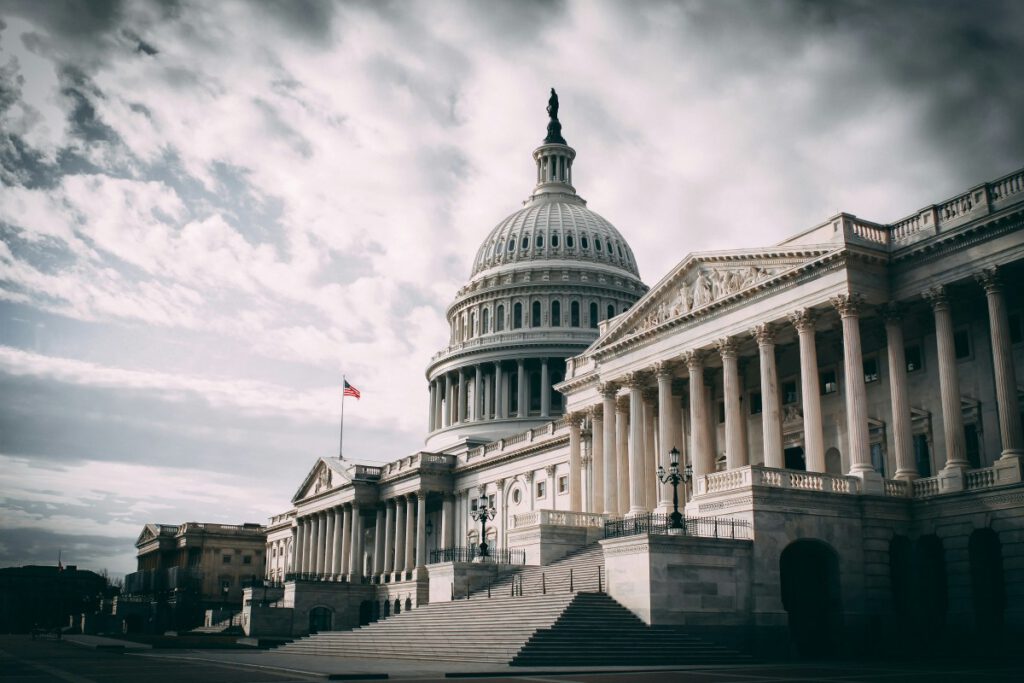For the first time in six years, the U.S. government is shut down. And if the last time this happened is any indication, it could be awhile until it’s reopen.
In 2019, the federal government was shut for a record 35 days. National parks and museums were shut, court systems and regulatory functions seized up, and even welfare programs for food and housing security were affected. We’re now repeating the past, as we have 20 times since 1976.
Related: The U.S. Government Just Shut Down: Here’s What It Means for the Economy and Stocks
A shutdown isn’t just trouble to government employees, who are furloughed or work without pay during the shutdown. It’s also an inconvenience for all Americans. Hence, it’s natural to wonder when this one will end. Unfortunately, we’re not particularly close to a resolution.
How Did We Get Here?
The government shut down on Wednesday after Congress failed to pass a temporary funding bill called a continuing resolution. Two proposals, one from the Republican majority and another from the Democratic minority, fell short in the Senate.
Democratic leadership have indicated a willingness to negotiate with the opposition, but negotiations with Republican leadership such as House Speaker Mike Johnson (R-LA), Senate Republican Leader John Thune (R-SD), and President Donald Trump have not been enough to get a bill signed.
What Do Republicans Want?
What Republicans want is simple: they want seven Senate Democrats to vote “yes” on the continuing resolution, which will help them procure the 60 votes necessary to pass the bill in the 100-seat Senate. They argue this is the same resolution as Democrats voted yes on months ago.
That’s all it would take to put the government back on its feet. However, the Republicans want to pass the current funding bill as is, without further negotiations with Democrats. They consider the continuing resolution a ‘must-have’ before agreeing to further talks on policy matters, including the complete government budget, which still has yet to be passed.
What Do Democrats Want?
Democrats might have signed off on a funding bill months back, but their concerns today are different; they center on expiring health care subsidies and whether funding authorized by Congress is actually spent.
Chief among these worries are Affordable Care Act (ACA) subsidies passed during the pandemic. If something is not done to preserve these subsidies, many low and middle-income Americans who get healthcare from the Marketplace could see their premiums double or triple in 2026.
Also a concern is worries about whether or not checks and balances are respected. While it is the executive branch’s job to spend the money that Congress says to spend, the current administration has previously chose to withhold or delay funding. Those worries have only been further validated by the Office of Management and the Budget (OMB) withholding money specifically from blue states as a form of ‘retaliation.’
As it stands, the lack of guarantees about spending are reasons enough for Congressional Democrats to question whether Republicans will seriously take up policy discussions after the government is temporarily funded.
How Will It End?
Speaker Mike Johnson says that Republicans have “nothing to negotiate.” He might feel that way for now, on day two of the shutdown, but Republicans will ultimately need the support of a few Democrats to reopen the government.
It’s unlikely to end quickly. Prediction market Polymarket assesses a 41% likelihood that the government shutdown will last until “October 15 or later.” A slimmer 36% see it ending between Oct. 10 to Oct. 14.
But with many Congressional Republicans skipping town after the shutdown, the Jewish holiday of Yom Kippur, and Senate Republican Leader John Thune (R-SD) saying he thinks it’s “unlikely” that the Senate will have votes over the weekend, it’s not looking great.
Ultimately, the end of the government shutdown will come in one of two ways: negotiation or capitulation.
Republicans might negotiate with Democrats on the key issues to procure necessary votes to temporarily fund the government, or they might simply win over the necessary defectors to get the bill. At this stage, the former seems more likely, even as Republicans swear there’s no negotiation to be had.
That’s because, if Democrats rolled over and capitulated, they would alienate their already-frustrated base. Support for the party in popular polls has reached record lows, with voters attacking the party for being feckless in the face of a second Trump presidency.
But with Republican rank-and-file relishing an opportunity to bash their opposition on government-run websites, a controversial move which has inspired use of the term “Democrat Shutdown”.
It remains to be seen how long the battle of egos will last, but ultimately, this is Washington, D.C. that we’re talking about. At some point, somebody has to make a deal.




